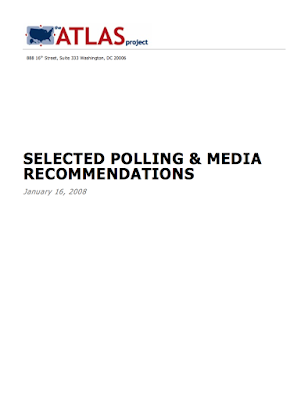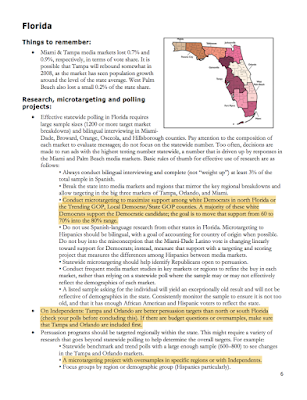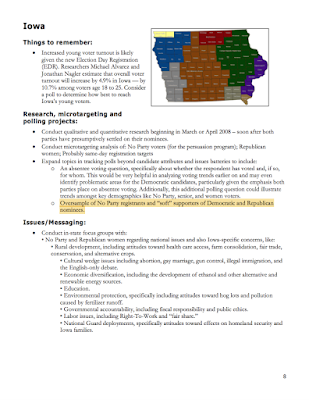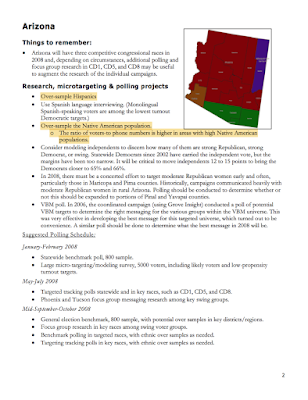
Yet another in a long line of emails from the Democratic presidential candidate’s camp gives us an inside look at political polling and how it has been corrupted. Polls, even with their questionable accuracy, can be very persuasive voter motivator during an election; some voters will choose not to vote because their candidate looks like a shoe-in while others will choose not to vote because their candidate is so far behind that they feel as though their vote won’t matter.
In among the tens of thousands of emails, there was a fascinating 37 page document from “The Atlas Project” dated January 16, 2008, back when Hillary Clinton was taking her first run at the Oval Office. Here is the title page from the document:
In this document, the authors provide us with a roadmap that could be used to skew polling numbers for Arizona, Colorado, Florida, Iowa, Michigan, Minnesota, Missouri, Nevada, New Hampshire, New Mexico, Ohio, Pennsylvania, Virginia, West Virginia and Wisconsin. Note that, according to Politico, Colorado, Iowa, New Hampshire, Florida, Nevada and Ohio are considered the seven states which are most likely to be contested in a general election (i.e. they are considered swing states). In many cases, the outcome in these states will determine the winner of a presidential election as was found during the 2000 contested election which boiled down to the outcome in Florida.
In the email to which the Atlas study was attached, there was the following comment from Tom Matzzie, a former director of MoveOn, a left-leaning political action committee and policy advocate:
“Hey, when can we meet? I also want to get your Atlas folks to recommend oversamples for our polling before we start in February. By market, regions, etc. I want to get this all compiled into one set of recommendations so we can maximize what we get out of our media polling.” (my bold)
Note the use of the word “oversample”. By oversampling in particular regions or among particular racial/ethnic groups, the final polling result can be impacted in a desired direction (i.e. support for the Democrats and support for Hillary Clinton in this case).
Now, let’s look at some details from the Atlas publication. Here is a screen capture showing the recommendations for the state of Florida with pertinent passages highlighted:
Note the use of the word “oversample”. As well as oversampling, in Florida, pollsters were to make certain that the sample was “…not too old and that it has enough African American and Hispanic voters to reflect the state“.
Here is a screen capture showing the recommendation for the state of Iowa, again, with the pertinent passages highlighted:
Again, note the use of the word “oversample”.
Lastly, here are the recommendations for the state of Arizona, a non-swing state:
Again, the authors of the report recommend oversampling, however, in this case they recommend oversampling of both Hispanics and Native Americans.
While this example of poll skewing comes from the Democrat playbook, you can see how political campaign teams can use various “under-the-table” methods to affect the results of pollsters. It is these polling results that are picked up by the mainstream media, generally with very little analysis, and are then broadcast to the voting public who quite often take them at face value. As I noted above, this can have a significant impact on voters and voter turnout and can also impact one’s political opponents.
Apparently, all is fair in American politics and the Podesta emails are giving us a fascinating glimpse of what lengths political campaigns are willing to go to to win.
Click HERE to read more





Be the first to comment